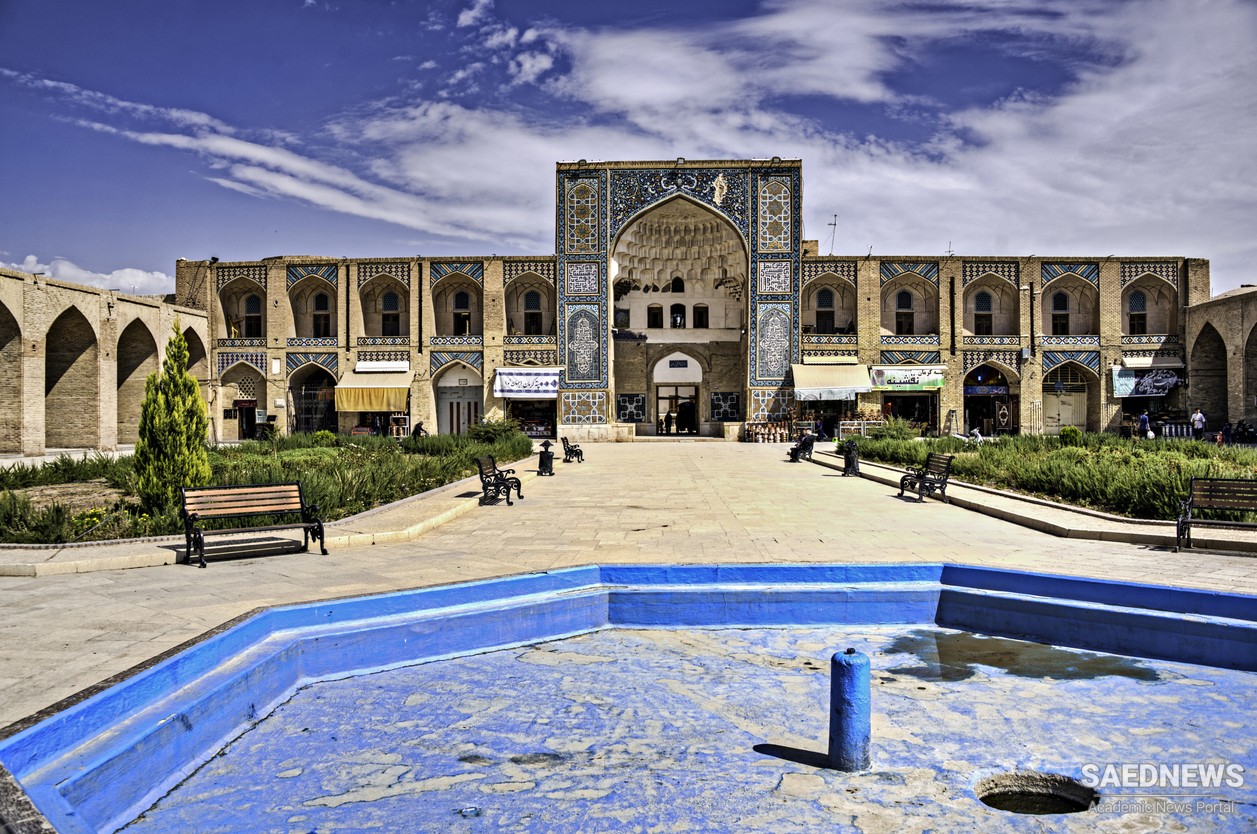Here silence of desert breaks by the wind blows through pistachio and palm tree gardens. Here we have people who have first extracted copper from the heart of stone and created fascinating works of art out of their own artistic instinct.
Jīroft, Shah Dād and Tal-e Eblīs are prehistoric traces of civilization in the region. In Kermān, Muslims in mosques, Zoroastrians in fire temples and Jewish people in synagogues all worship God and live peacefully together.
Shah Ne’matollāh Vali's Mausoleum
Shah Ne’matollāh Vali mausoleum, the celebrated poet and mystic and the founder of Ne’matollāhi Sufi order in the 14th century, is located to the southeast of the City of Kermān in a region called Māhān. Today, it is one of the most important Iranian mausoleums with a unique harmonization of architecture, garden arrangement and spiritual serenity.
Kermān's Congregation Mosque (Jama Masjid)
This mosque was built by Amir Mobārez ad-Din Mohammad Mozaffar Meybodī in the 13th century CE. This mosque was known as Safavid congregational mosque during the Safavid dynasty (1501-1736). This is a remaining building from the time of the Buyid dynasty (934-1062). It has a symmetric design with two summer and winter verandas-- all covered with exquisite tile-work.
Shah Zāde Māhān Garden
This is a garden from the Qājār era (1789-1925), located close to the Māhān area. This attraction consists of three major parts, the Shāh Neshīn building, the Sardār building and a bath. The techniques of watering and the stair-structure of the garden are some of the wondrous features of this place.
Jalīlīye Dome
This heptagonal brick dome and the arches which are made of plaster and stone, is located east of Kermān. This is a building from the Sassanid era (1501-1736).
Ganj Alī Khān Bathhouse
This bath is located in the city of Kermān including two parts, a dressing room and a hothouse. Based on symmetric architecture of stone columns, shelves and platforms in the dressing room, a unique atmosphere has been created. The wonders of this ancient building lie in its system of water channels, fountains and a stone which shows the time of using the sunlight. It has an area of 1380 square meters and is decorated beautifully with tile-work, plaster-work and arches.
Arg-e Bam
The site holds the largest clay structure of the world. This fortification is located in the northeast of the modern city of Bam, but once it was the main city. It used to be surrounded by gardens, farms and residential lands from three sides. There is a huge protecting wall with a large channel behind it, keeping the enemy away from this structure.
Main structure materials used in Arg-e Bam are mud and straw, clay and in some parts bricks, palm tree timbers are also used. This castle has different parts, an entrance gate, public residential section, soldier's house and the ruler's residential section. Over 90 percent of this building was destroyed in 2003 due to Bam powerfull earthquake. The place was registered in UNESCO World Heritage List in the same year.
Sīrjān Free Economic Zone
Sīrjān plays an important role in the economy of the area because of being located in the connecting roads of four major cities Kermān, Yazd, Shiraz and Bandar Abbās. This has given this city an influential role in the economy of the whole Kermān province.
This village is located near Shahr-e Bābak. It has a unique architecture. There is a fortress in the village which is carved out of rock with an area of 400 square meters; it consists of three rooms with no fortification. The houses mostly have four or five floors as they are built on the steep valley of Meymand


 Kurdistan: Untouched Nature and Virgin Landscapes
Kurdistan: Untouched Nature and Virgin Landscapes














































